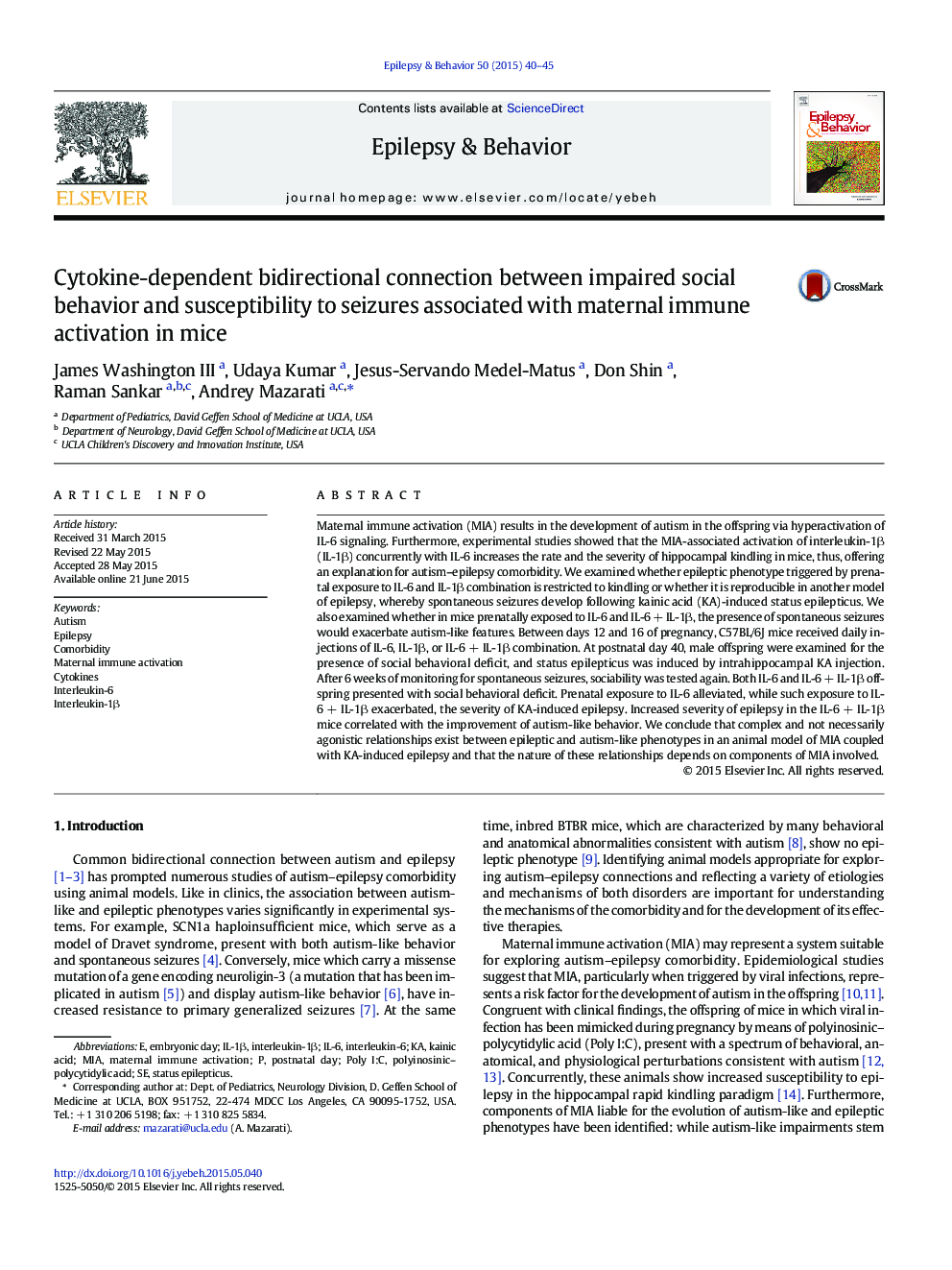| کد مقاله | کد نشریه | سال انتشار | مقاله انگلیسی | نسخه تمام متن |
|---|---|---|---|---|
| 6010802 | 1579839 | 2015 | 6 صفحه PDF | دانلود رایگان |
- Prenatal exposure to IL-6 and to IL-6 + IL-1β produces autism-like behavior in mice.
- Prenatal exposure to IL-6 + IL-1β exacerbates kainate-induced chronic epilepsy.
- Proepileptic effect of IL-6 + IL-1β correlates with improved autism-like behavior.
- Prenatal exposure to IL-6 alleviates the severity of kainate-induced epilepsy.
Maternal immune activation (MIA) results in the development of autism in the offspring via hyperactivation of IL-6 signaling. Furthermore, experimental studies showed that the MIA-associated activation of interleukin-1β (IL-1β) concurrently with IL-6 increases the rate and the severity of hippocampal kindling in mice, thus, offering an explanation for autism-epilepsy comorbidity. We examined whether epileptic phenotype triggered by prenatal exposure to IL-6 and IL-1β combination is restricted to kindling or whether it is reproducible in another model of epilepsy, whereby spontaneous seizures develop following kainic acid (KA)-induced status epilepticus. We also examined whether in mice prenatally exposed to IL-6 and IL-6 + IL-1β, the presence of spontaneous seizures would exacerbate autism-like features. Between days 12 and 16 of pregnancy, C57BL/6J mice received daily injections of IL-6, IL-1β, or IL-6 + IL-1β combination. At postnatal day 40, male offspring were examined for the presence of social behavioral deficit, and status epilepticus was induced by intrahippocampal KA injection. After 6 weeks of monitoring for spontaneous seizures, sociability was tested again. Both IL-6 and IL-6 + IL-1β offspring presented with social behavioral deficit. Prenatal exposure to IL-6 alleviated, while such exposure to IL-6 + IL-1β exacerbated, the severity of KA-induced epilepsy. Increased severity of epilepsy in the IL-6 + IL-1β mice correlated with the improvement of autism-like behavior. We conclude that complex and not necessarily agonistic relationships exist between epileptic and autism-like phenotypes in an animal model of MIA coupled with KA-induced epilepsy and that the nature of these relationships depends on components of MIA involved.
Journal: Epilepsy & Behavior - Volume 50, September 2015, Pages 40-45
